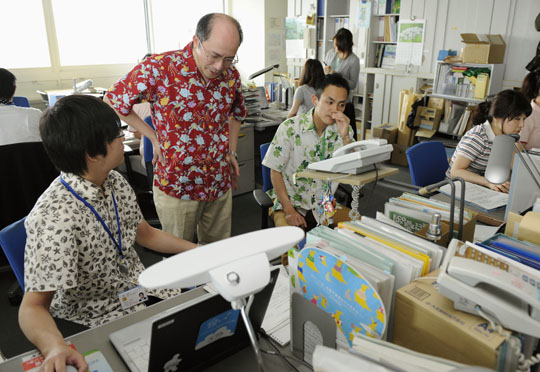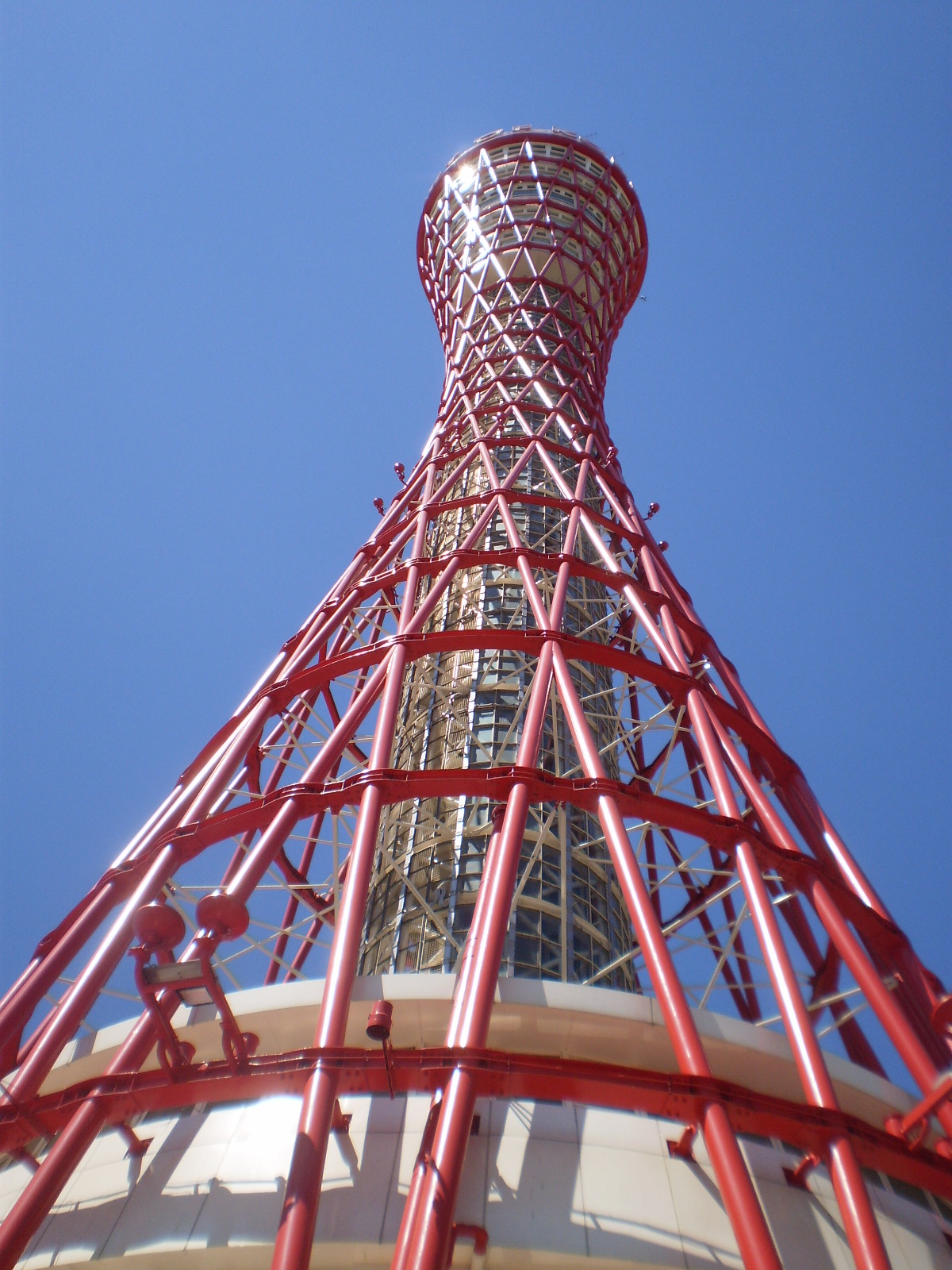Special Feature: A Beginner’s Guide to Cool Biz
It is August. And once again, it is time to accept your part as that sweaty, melting gaijin, collapsing into the air conditioning on a train, as your fellow, perfectly groomed, Japanese passengers desperately try not to sit next to you. It’s time to acknowledge that feeling of inadequacy as you see an army of Japanese salarymen and women all immaculate and fresh-looking, in the same short sleeved white shirt, sans tie, sans jacket. So where is the sweat? What happened to the suit? What do they tie around their forehead post enkai?
Welcome to Japanese summer. Welcome to Cool Biz.
Cool Biz, started in 2005 by Hyogo’s own Yuriko Koike, is an initiative requiring air conditioners in government ministries and agenciesbe set at 28 degrees Celsius, and workers to wear short sleeved shirts and casual wear without a tie or jacket. This state-sanctioned rejection of formality and tradition seemed at first sacrilegious and the concept took a while to catch on, but in its first year alone the energy savings from Cool Biz were estimated to be equivalent to the volume of CO2 emitted by 1 million households in one month.In the subsequent year, this increased to 2.5 million. From these beginnings, Cool Biz is now embraced all over Japan and a source of great national pride.
Post Tohoku earthquake and in the wake of the Fukushima Daiichi disaster and resulting energy shortages, the Japanese government launched (the somewhat punchier) ‘Super Cool Biz’. In addition to previous measures, and so as to reduce the stress on the strained electricity grid, employees were encouraged to adjust their working hours to the morning and evening, and to make use of their annual leave to holiday.
The Super Cool Biz campaign for 2013 kicked off on 3 June. This year, workers at ministries and agencies are encouraged to dress lightly in polo shirts, sneakers, and Aloha shirts, although unlike in previous years, employees may no longer wear t-shirts, jeans or sandals. Private companies are also encouraged to take part. You may have experienced Super Cool Biz firsthand, with school air conditioning used sparingly and only after a certain date and when above a certain temperature.
Here are some commonsense tips to survivingSuper Cool Biz and Japanese summer.
1. Fight with fashion
It seems counterintuitive to put on more clothing, but this is indeed the Japanese way; it would be rare to see a Japanese person without an undershirt of some kind in summer. Uniqlo and its subsidiary company, GU (as well as nearly every other clothes manufacturer), sell shirts and singlets to be worn under clothing which are designed to absorb perspiration and minimise odour. Whether the shirts do as claimed or have only a placebo effect is for you to decide. For more professional types, dressing for Cool Biz does not mean dressing down; fortunately Japan is the place to buy light weight, non-lined suits.
If you’re more comfortable relying on time-tested, low-tech clothing stick to the basic rules of summer dressing and choose loose fitting, natural fabrics (particularly cotton and linen) in light colours.
2. Hydrate your guts out
Regardless of your activity level it is important to stay hydrated to lower your body temperature and replace fluid lost by sweating. Keep in mind that soft drinks, juices, coffee, or alcohol, while thirst quenching, contain ingredients which dehydrate, and as such water remains the best option. With a vending machine on every corner there really is no excuse.
3. Consider modern gadgetry
If you are one of the chosen few with air conditioning, remember to use it with a thought to the environment and your electricity bill. Operate your unit with all windows closed, curtains drawn and with doors closed to non-essential rooms. Shade the western side of your apartment if possible, and be aware of the natural and electrical light you are introducing into the environment. Run your air conditioner at 23 degrees Celsius for optimal efficiency, or, if you want to embrace the Super Cool Biz ethos, at 28 degrees Celsius.
If you are one of the majority without, a pedestal fan is essential to surviving the hot nights of summer. But pay attention to natural ventilation; if you are fortunate to have an apartment with windows and doors opening to either the North and the South or the West and East you will have excellent cross ventilation that will keep things wonderfully cool for free.
4. Â Consider traditional gadgetry
You don’t need a lot of money to take cool with you as there are several life saving devices you can pick up for free or next to nothing. Along with tissues, Japanese companies take advantage of summer to hand out enormous hand fans (uchiwa), covered with advertising, with which you can create your own mini-breeze from the stagnant air. Do as the Japanese do and carry a small face towel with you at all times (a meccha kawaii pattern is optional) to blot away sweat on your face and neck. And for those who don’t want a glistening complexion, there are many pocket blotting papers around, designed to remove sweat and oil but not makeup.
 These tips, together with frequent trips to beer gardens and shaved ice dessert shops, will hopefully ensure your survival, happiness and sanity over the next few months. And above all else, don’t wish these days away! For as much as summer is unbearable in Japan, winter is worse. Let’s Cool Biz!
These tips, together with frequent trips to beer gardens and shaved ice dessert shops, will hopefully ensure your survival, happiness and sanity over the next few months. And above all else, don’t wish these days away! For as much as summer is unbearable in Japan, winter is worse. Let’s Cool Biz!
Kylie Pinder






